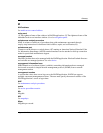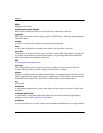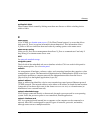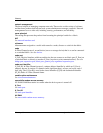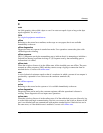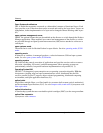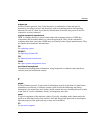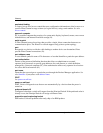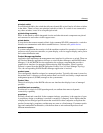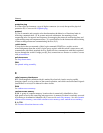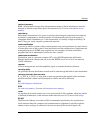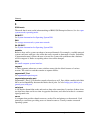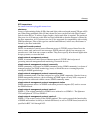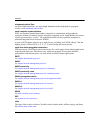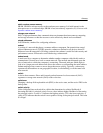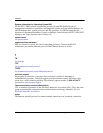
edge switch 2/16 service manual Glossary–41
Glossary
principal switch
In a multiswitch fabric, the switch that allocates domain IDs to itself and to all other switches
in the fabric. There is always one principal switch in a fabric. If a switch is not connected to
any other switches, it acts as its own principal switch.
printed wiring assembly
PWA. A thin board on which integrated circuits and other electronic components are placed
and connected to each other via thin copper traces.
private device
A loop device that cannot transmit a fabric login command (FLOGI) command to a switch or
director, nor communicate with fabric-attached devices. Contrast with .public device.
processor complex
A system configuration that consists of all the machines required for operation, for example, a
processor unit, a processor controller, a system display, a service support display, and a power
and coolant distribution unit.
Product Manager application
Application that implements the management user interface for a director or switch. There are
two Product Manager applications: director or switch Product Manager, and HAFM Product
Manager. (1) In the HAFM Services application, the software component that provides a
graphical user interface for managing and monitoring HAFM products. When a product
instance is opened from the HAFM application Product View or Fabric Manager Topology
View, the corresponding HAFM Product Manager application is invoked.
product name
User-configurable identifier assigned to a managed product. Typically, this name is stored on
the product itself. A director or switch product name can also be accessed by a simple network
management protocol (SNMP) manager as the system name.
Product View
The top-level display in the HAFM software user interface that displays icons of managed
products.
prohibited port connection
In a director or switch, in S/390 operating mode, an attribute that removes dynamic
connectivity capability.
proprietary
Privately owned and controlled. In the computer industry, proprietary is the opposite of open.
A proprietary design or technique is one that is owned by a company. It also implies that the
company has not divulged specifications that would allow other companies to duplicate the
product. Increasingly, proprietary architectures are seen as a disadvantage. Consumers prefer
open and standardized architectures, which allow them to mix and match products from
different manufacturers.



